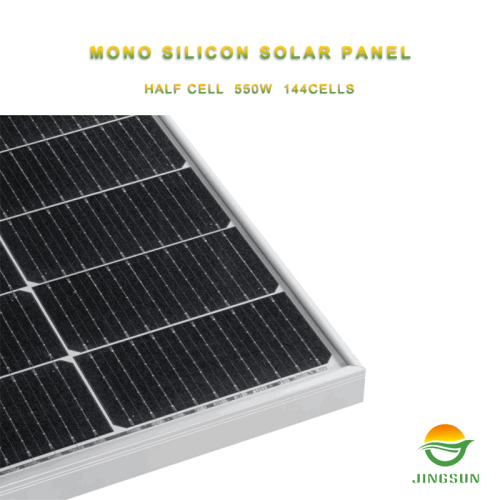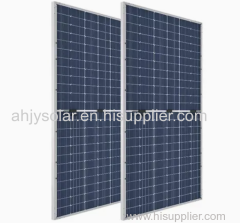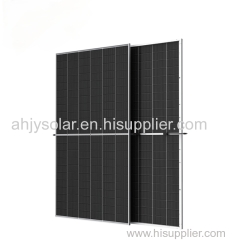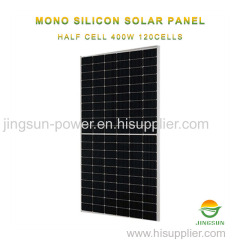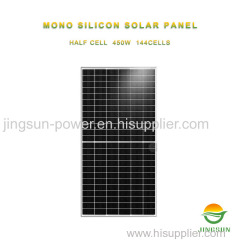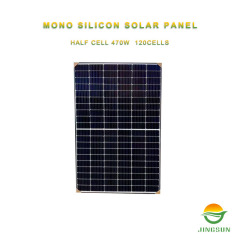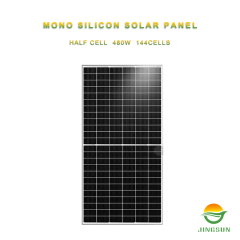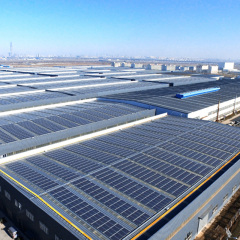
|
Jingsun New Energy And Technology Co.,Ltd.
|
550W Mono Solar Panel Cost-Effective
| Payment Terms: | T/T,L/C,D/A,D/P,WU,Paypal,Money Gram |
| Place of Origin: | Anhui, China (Mainland) |
|
|
|
| Add to My Favorites | |
| HiSupplier Escrow |
Product Detail
The 550W solar panel uses high light transmission tempered glass with anti-reflective properties for greater light collection capacity. It is more dur
Product Description
Type | P type Mono-crystalline |
Panel Efficiency | 22.3% |
Back Sheet Color | White |
Front Glass | 3.2mm low-iron tempered suede glass |
Panel Size | 2279x1134x35mm |
Solar Cell Size | Mono 182*182mm |
No. of Cells | 144(6x24) |
Encapsulant material | POE/EVA |
Weight | 28.6kg±3% |
Warranty | 30years |
Certificate | TUV,CE,IEC,INMERTO,ISO |
Application Class | Class A |
Frame | Anodized Aluminium Alloy |
Junction Box | IP68 ,Rated |
Product Advantages
1.The 550W solar panel uses high light transmission tempered glass with anti-reflective properties for greater light collection capacity. It is more durable to extreme environments and can resist corrosion such as salt spray and ammonia gas. Mature technology and scientific and reasonable testing process ensure the quality of the product, which has a higher cost performance compared to the same type of modules.
2.The electrical design has been continuously optimised and improved, with lower resistance, low current loss and guaranteed photoelectric conversion rate. There is resistance to hot spots, a wider operating temperature range and a longer service life. The low decay rate is one of its outstanding performances, with a 15-year product warranty and a 30-year service life with an annual decay rate as low as 0.45%.
3.The 550W monocrystalline solar panel has a superb power generation efficiency of 22.3%. The design of multiple main grid lines is one of the guarantees of its high power, and the latest cutting technology ensures that the cells are cut intact and there will be no hidden cracks resulting in reduced efficiency. Its BOS is the basis to ensure the efficient and stable power generation of the modules. Our relevant accessories are tested for product performance and highly sealed to enable the modules to maintain efficient and stable power generation for a long time.
Electrical Parameters at STC
Maximum Power (Pmax) | 550Wp |
Maximum Power Voltage (Vmp) | 41.65V |
Maximum Power Current (lmp) | 13.21A |
Open-Circuit Voltage (Voc) | 49.60V |
Short-Circuit Current (lsc) | 14.00A |
Power Tolerance | 0~+5W |
Temperature Coefficients of Pmax | -0.350%°C |
Temperature Coefficients of Voc | -0.275%°C |
Temperature Coefficients of lsc | +0.045%°C |
STC (Standard Testing Conditions) | lrradiance 1000W/㎡, Cell Temperature 25°C, Spectra at AW1.5G |
Electrical Parameters at NOCT
Maximum Power (Pmax) | 550Wp |
Maximum Power Voltage (Vmp) | 39.43V |
Maximum Power Current (lmp) | 10.55A |
Open-Circuit Voltage (Voc) | 46.68V |
Short-Circuit Current (lsc) | 11.17A |
Maximum System Voltage | 1500V DC(IEC) |
Operating Temperature | -40°C~+85°C |
Maximum Series Fuse | 25A |
Maximum Static Load,Front | 3600Pa, 1.5 |
Maximum Static Load,Back | 1600Pa, 1.5 |
Application Class | Class A |
NOCT(Nominal Operating Cell Temperature) | lrradiance 800W/㎡, Ambient Temperature 20°C, Winds peed 1m/s ,AW1.5G |
Applications
1.The growing use of solar energy is a sign of the love and trust that people have in this new energy source. There are many benefits to having a solar power system in a house, starting with the fact that it will not be affected by rising electricity bills. Having a large enough area for solar panels can also add extra income. Often homes with solar power systems can be sold at a higher price and have a higher rate of sale than ordinary homes.
2.Solar power is used in an extremely wide range of applications, not only for domestic use, but also for national power stations, satellites and other areas. Theoretically, 1/3 of the Saharan sand could be used for solar panels to supply all of mankind's electricity needs, but this is of course impractical. The best way to do this is to lay out solar power stations on a distributed basis, and Jingsun Solar is committed to putting green renewable energy on the map all over the world.
3.Humanity can be freed from dependence on non-renewable resources and, from an environmental point of view, there is almost zero pollution, apart from that caused by production and transport. Of course these pollutions are minimal compared to the use of non-renewable energy sources, and at the end of their useful life, the relevant components can be recycled.
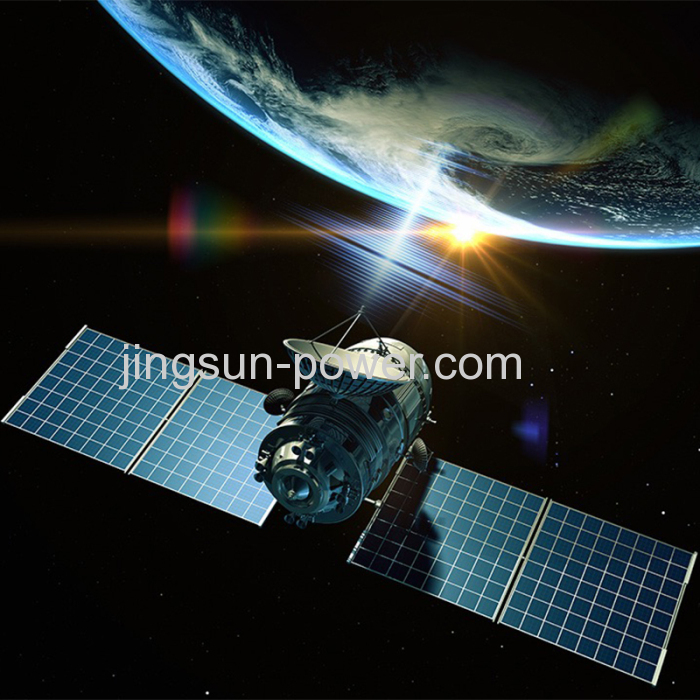
Related Search
Find more related products in following catalogs on Hisupplier.com
Related Products
-
Solar Panel 580W for solar system high efficient N-type Monocrystalline Silicon CellsJK580,JK585,JK590,JK595,JK600,JK605

-
Solar Panel 580W for solar system high efficient N-type Monocrystalline Silicon CellsJK580,JK585,JK590,JK595,JK600,JK605


